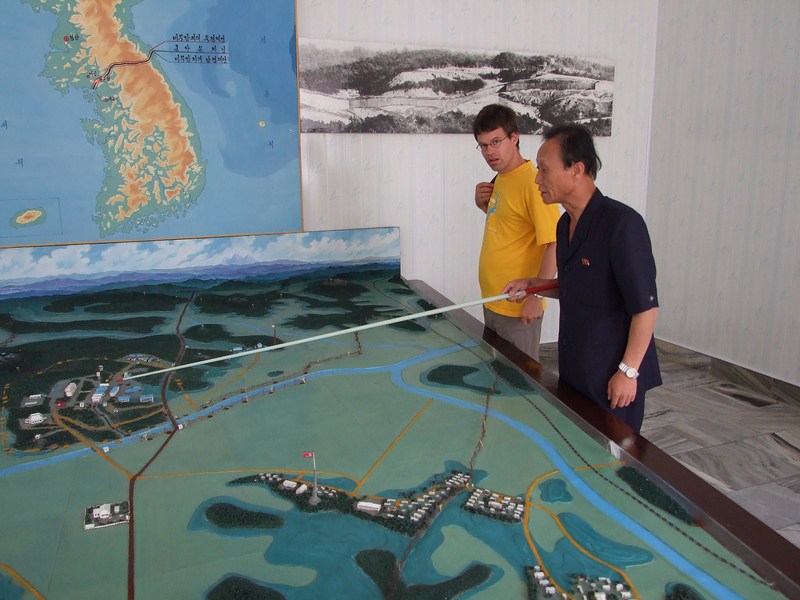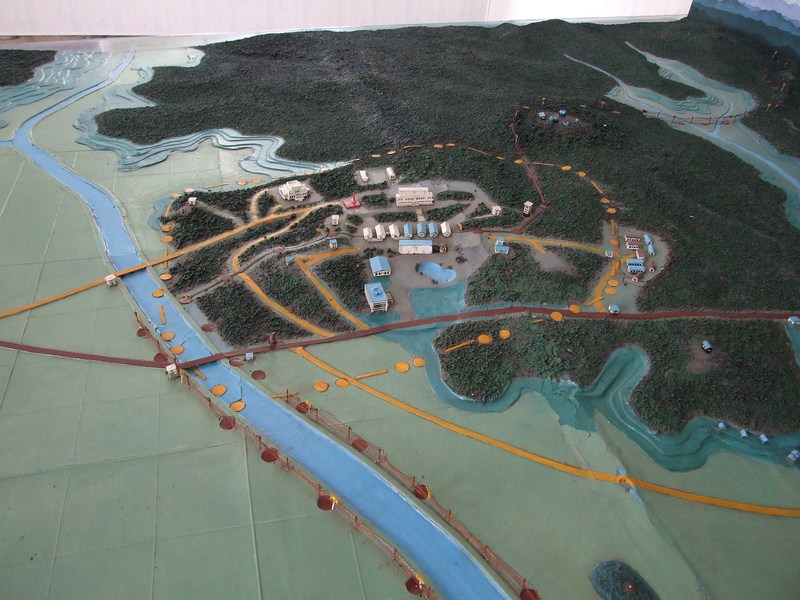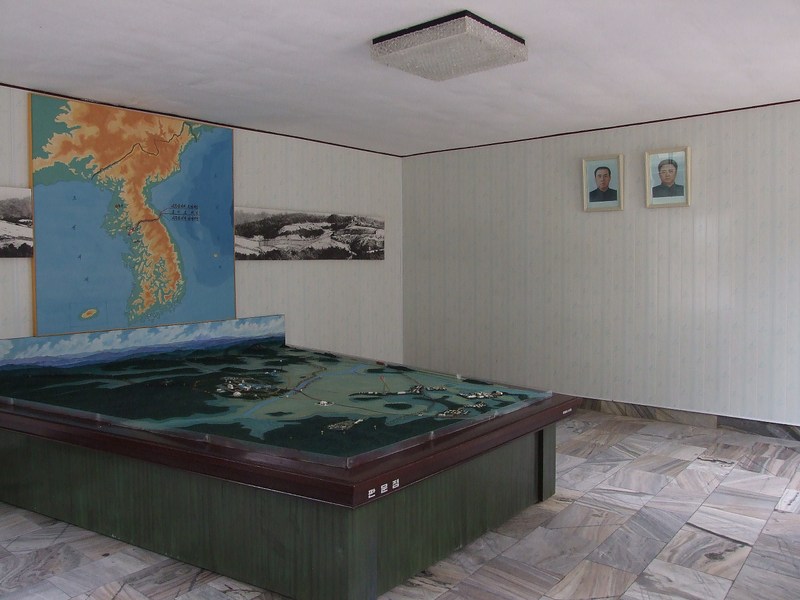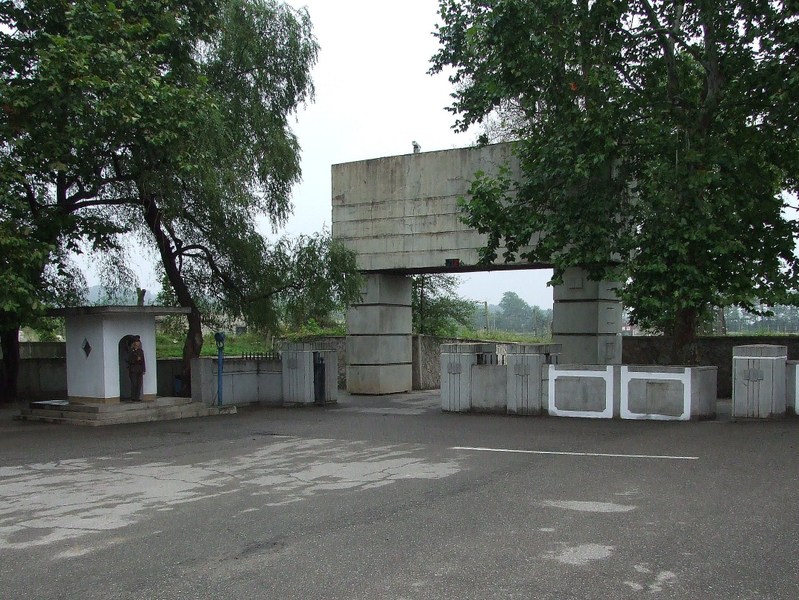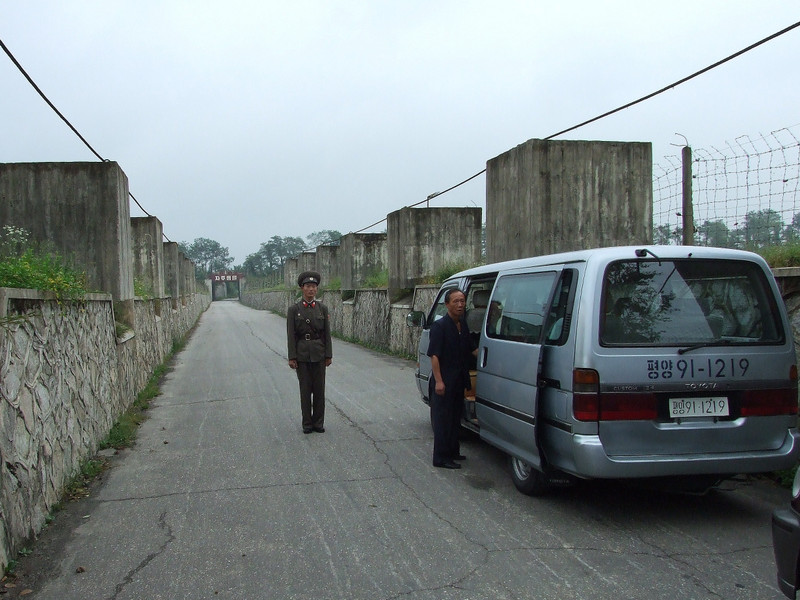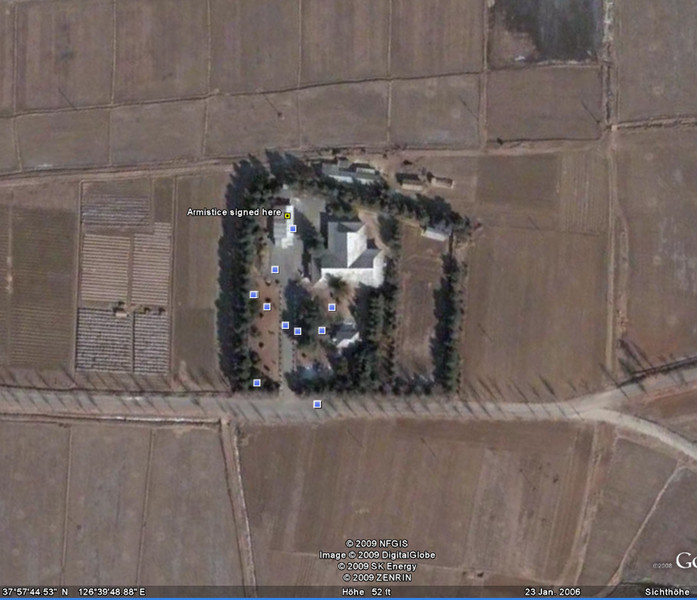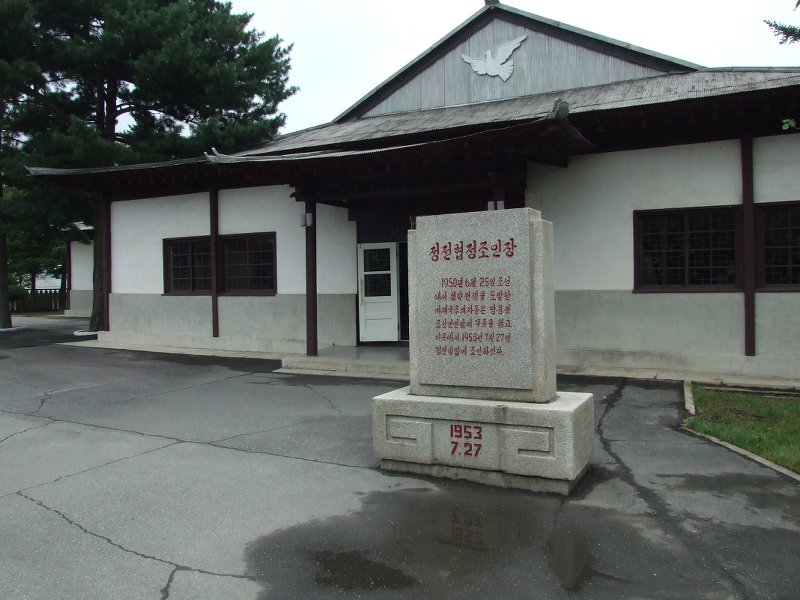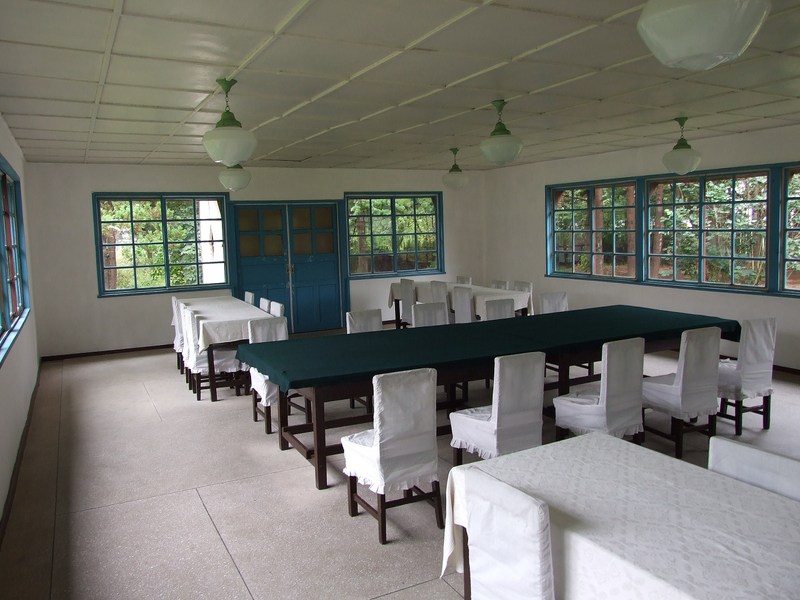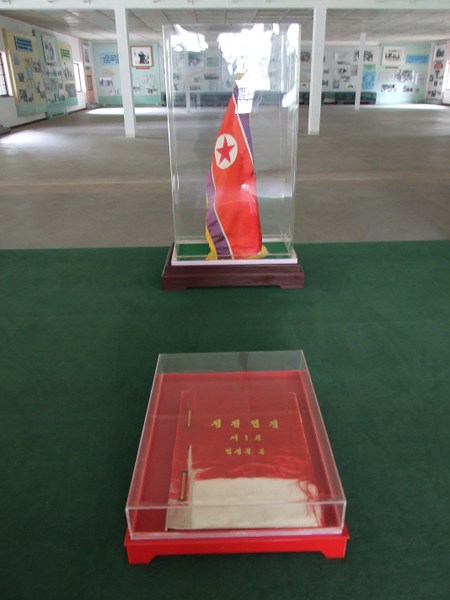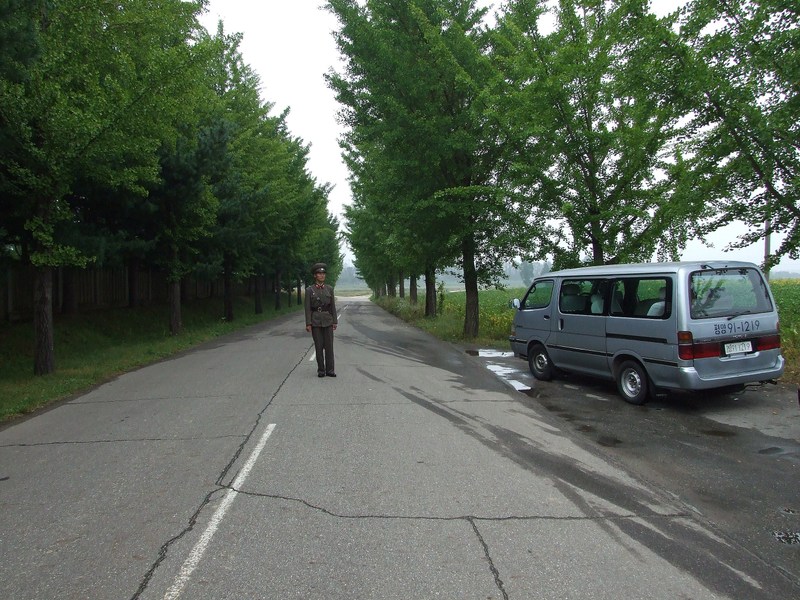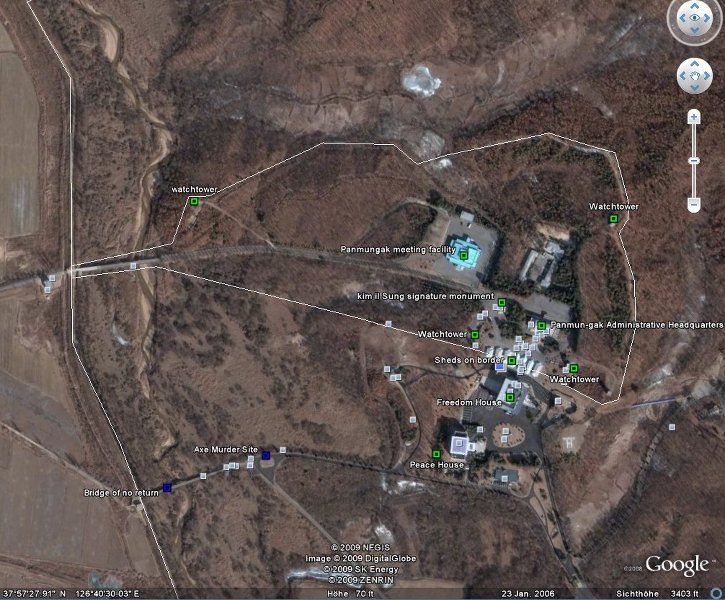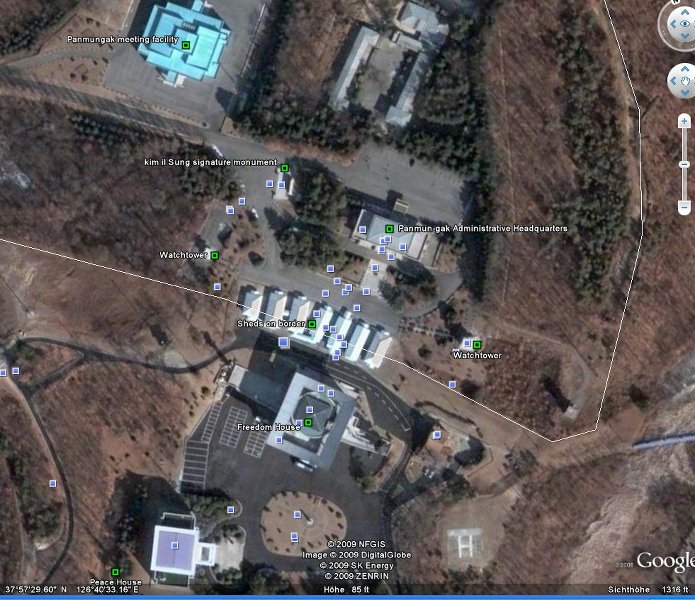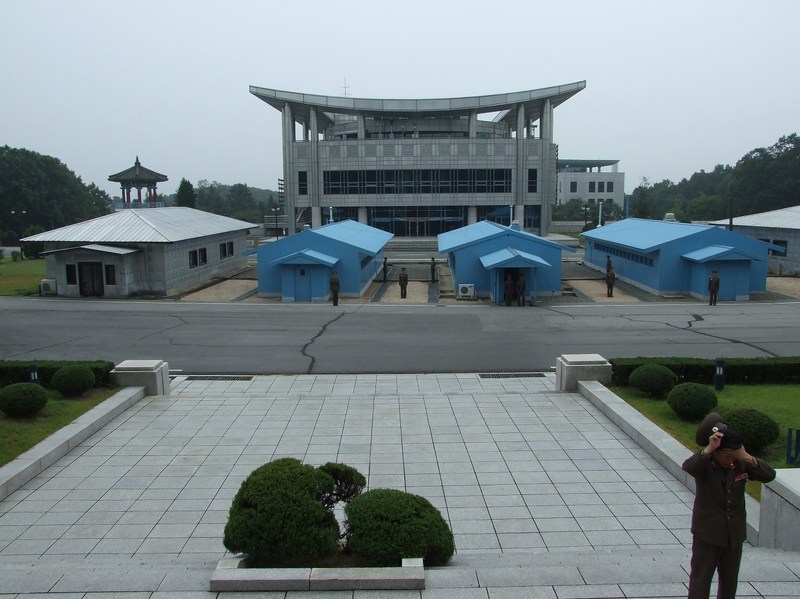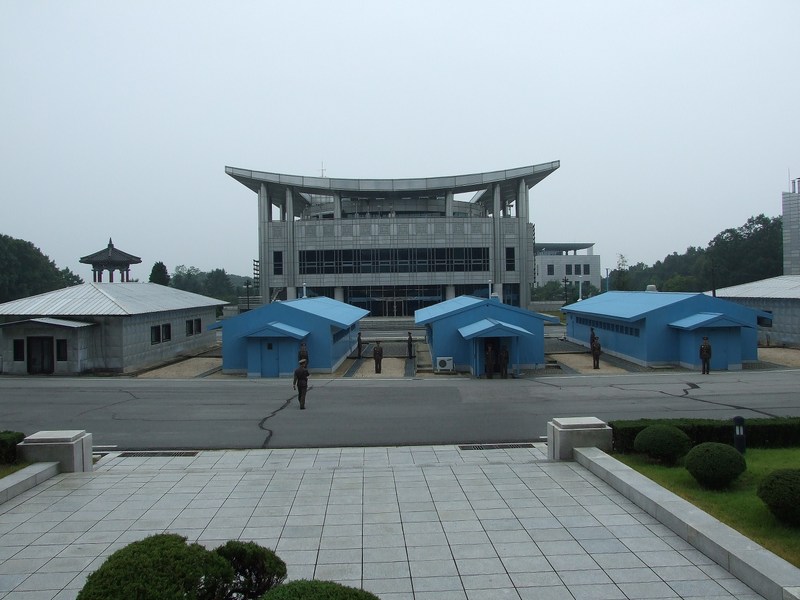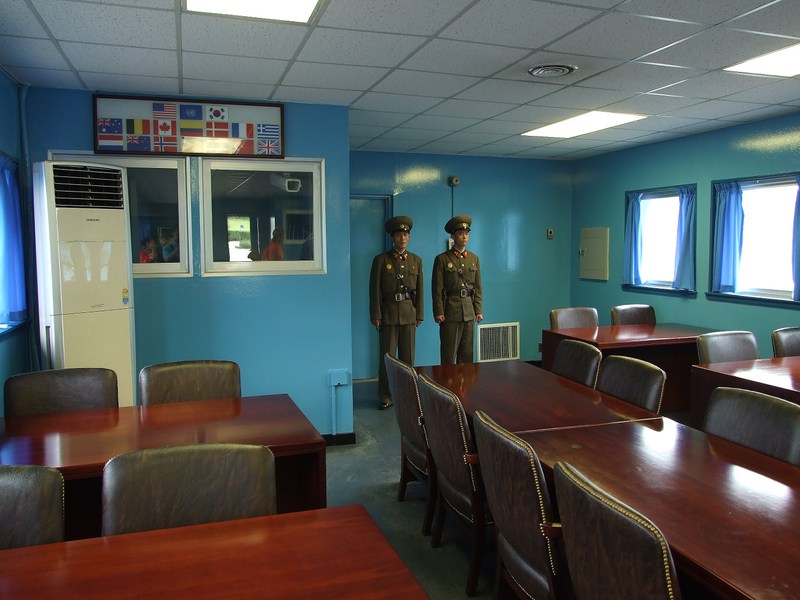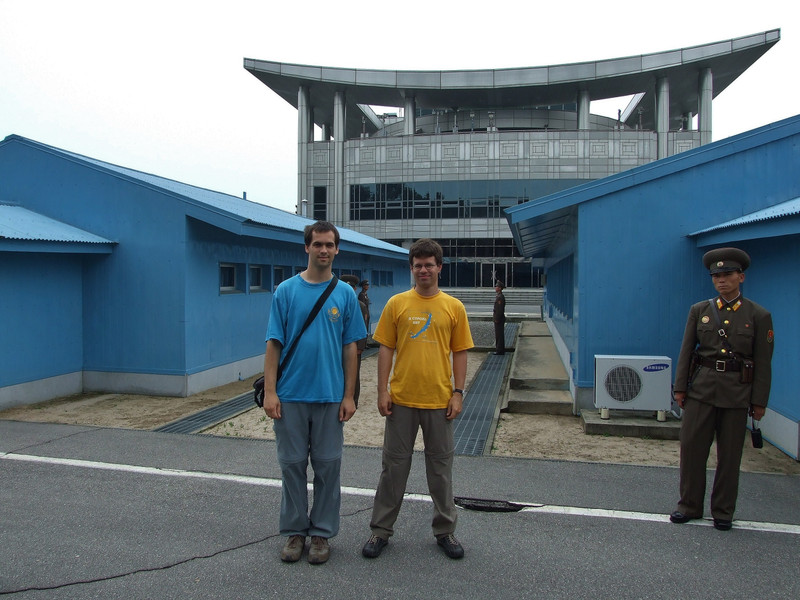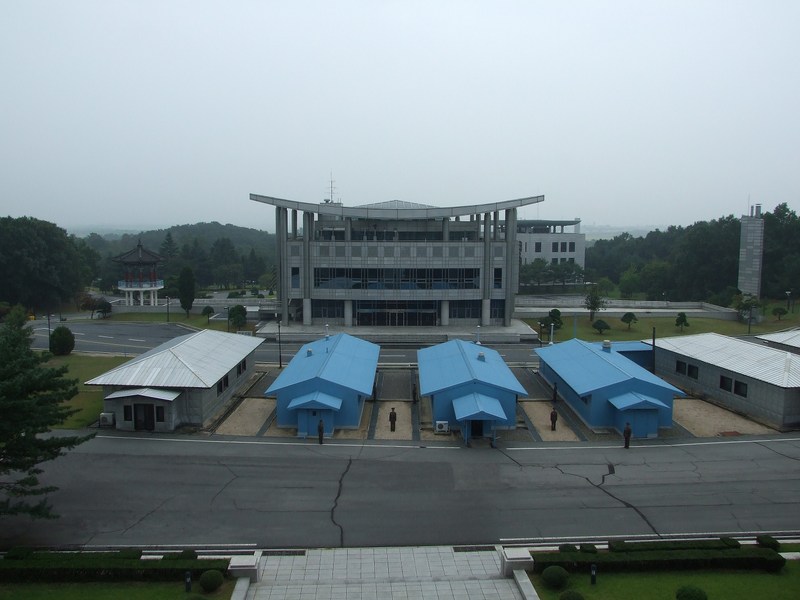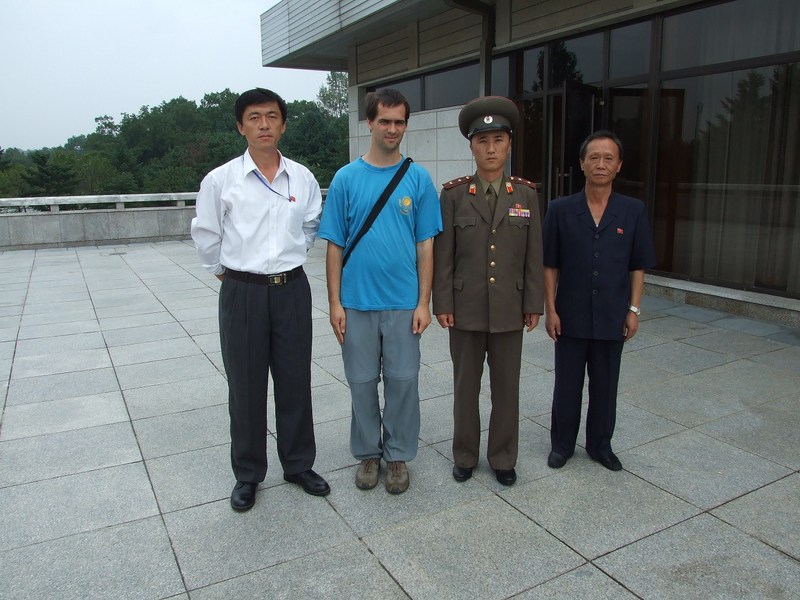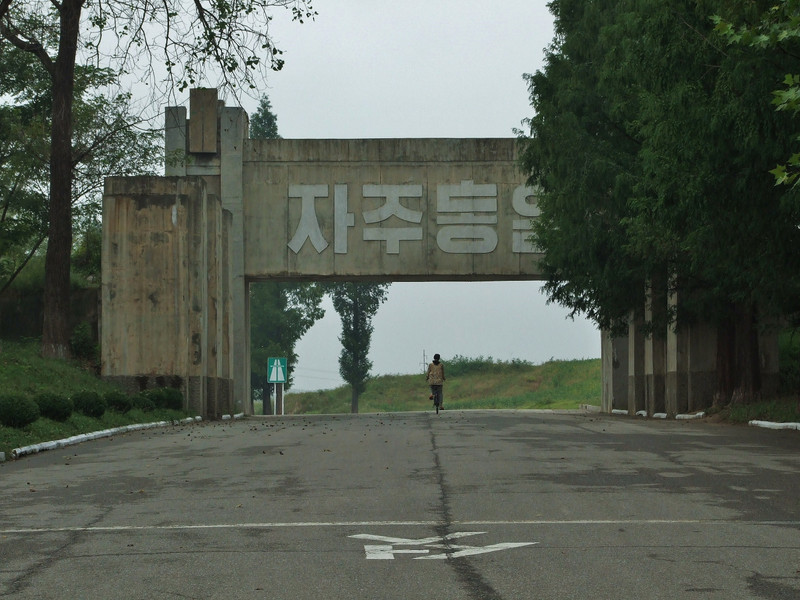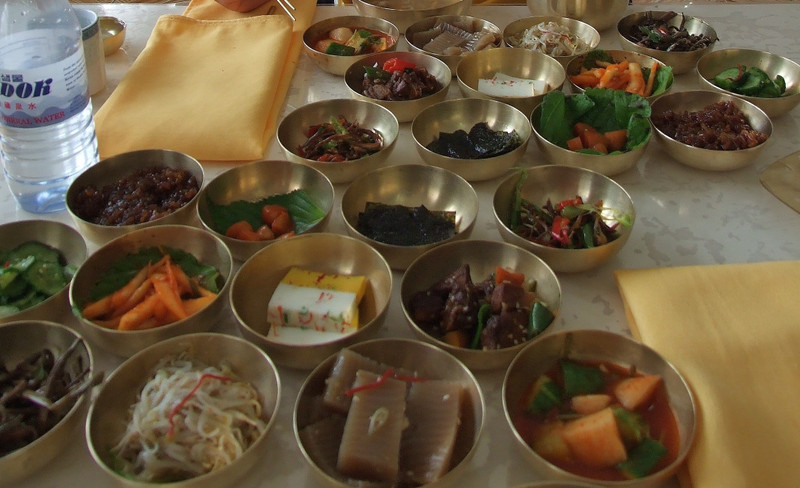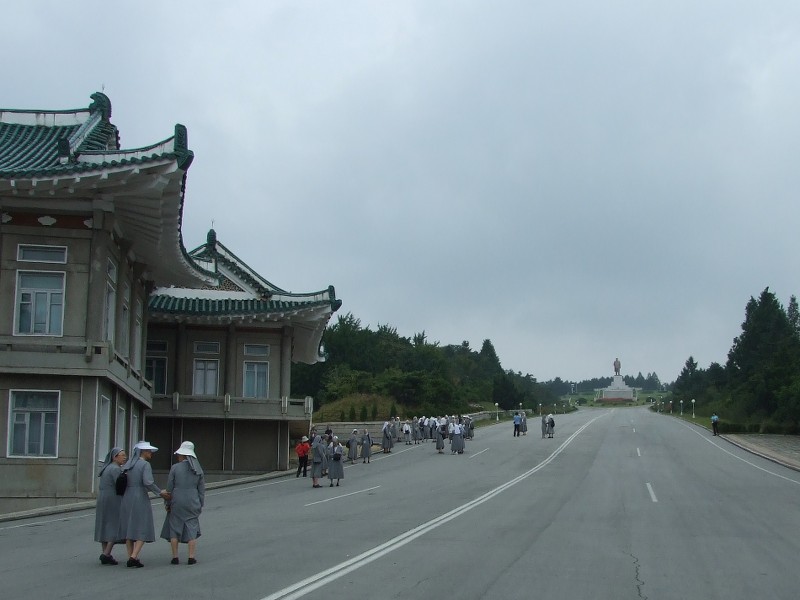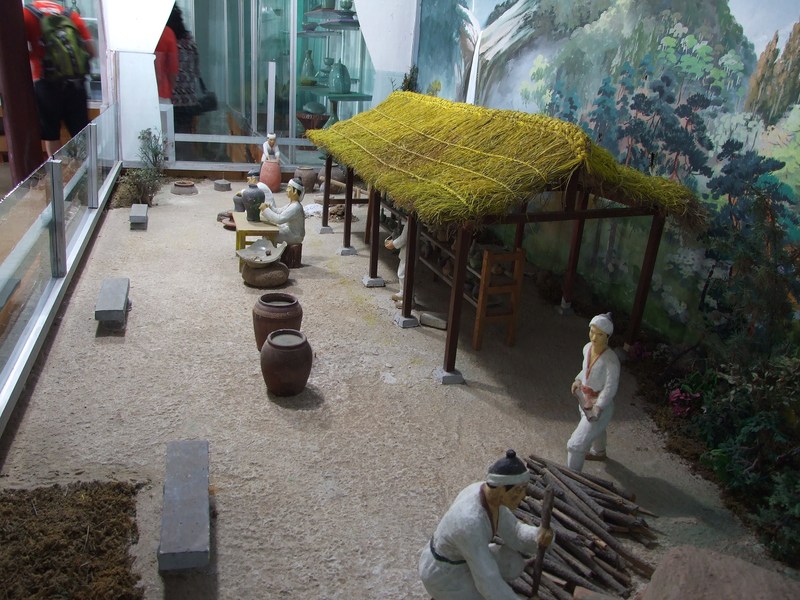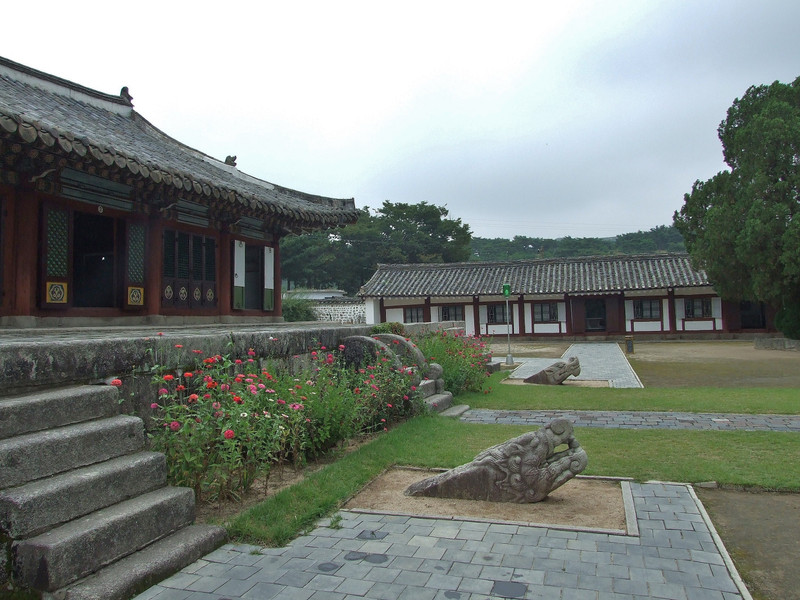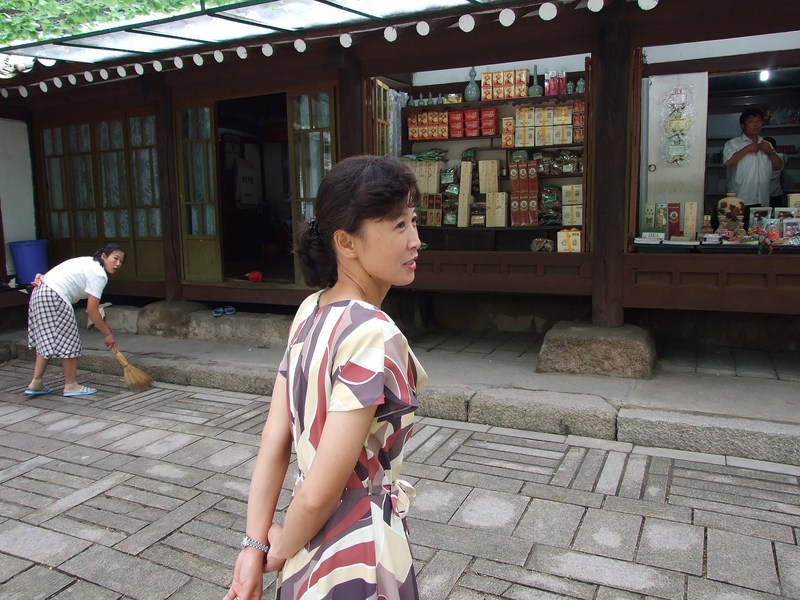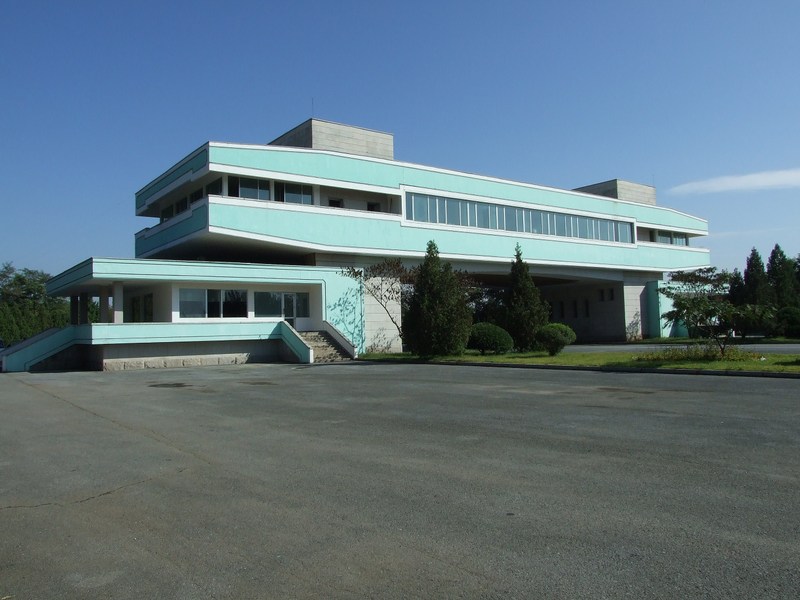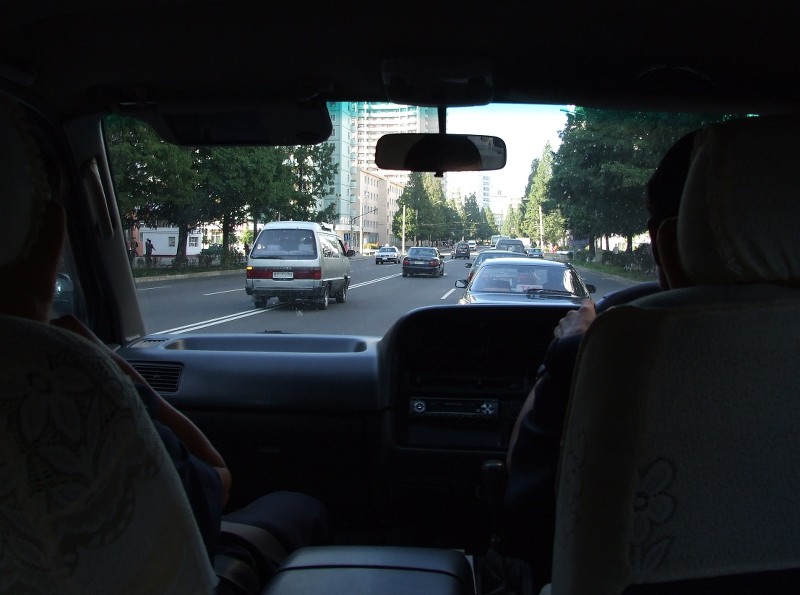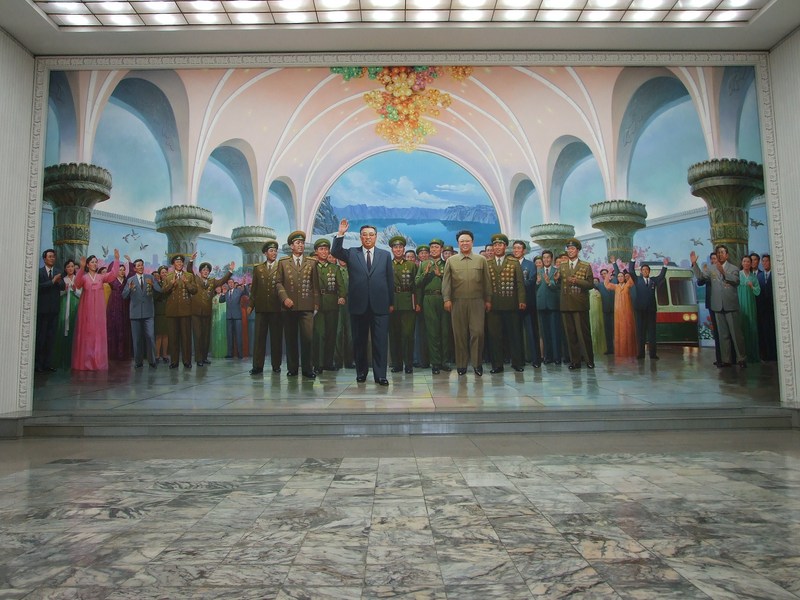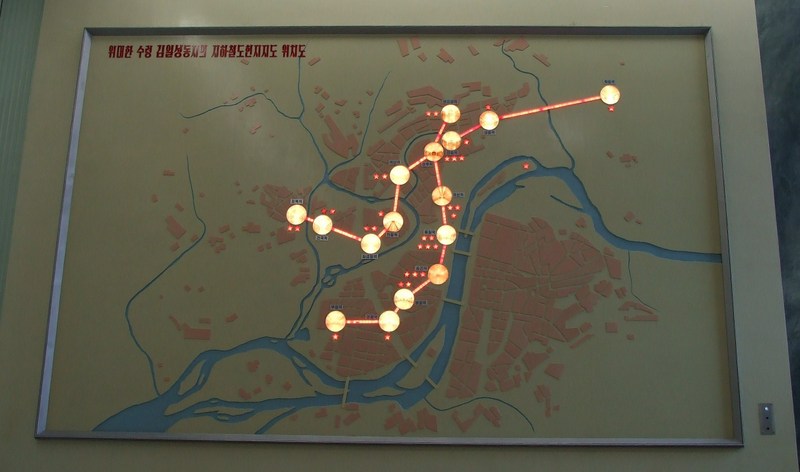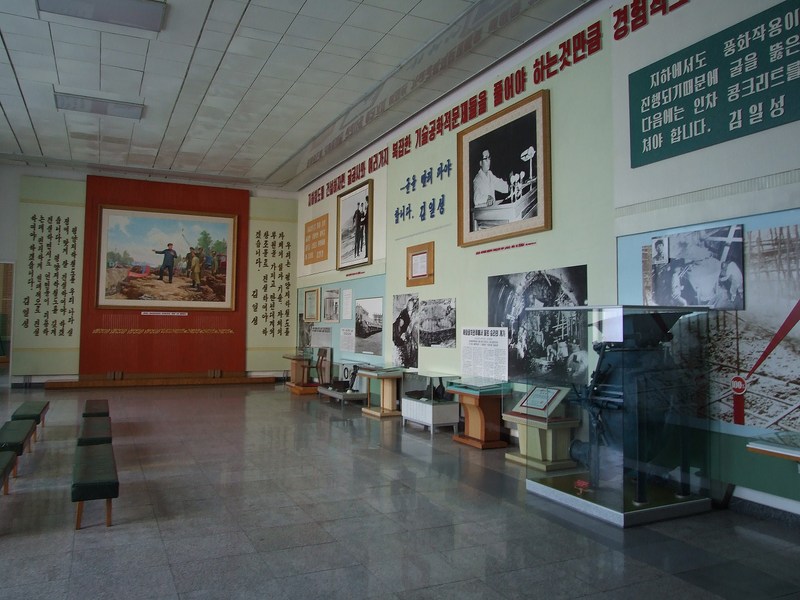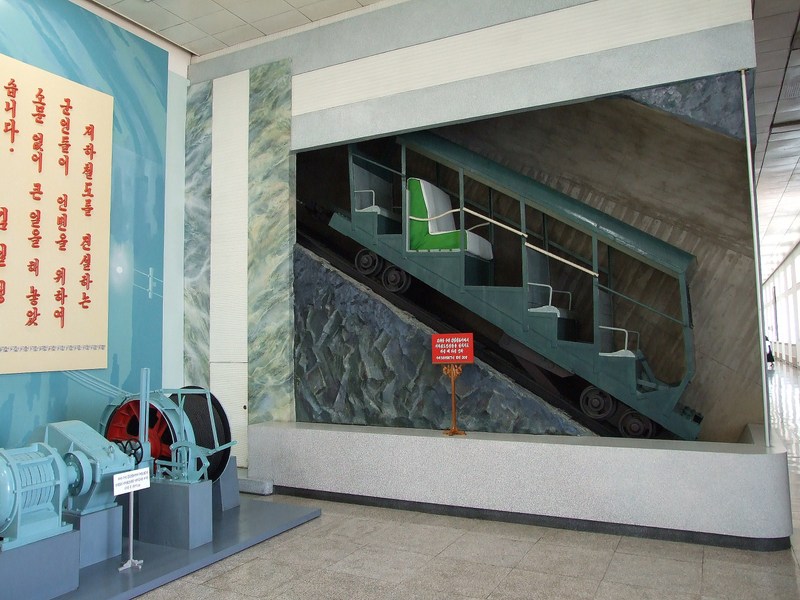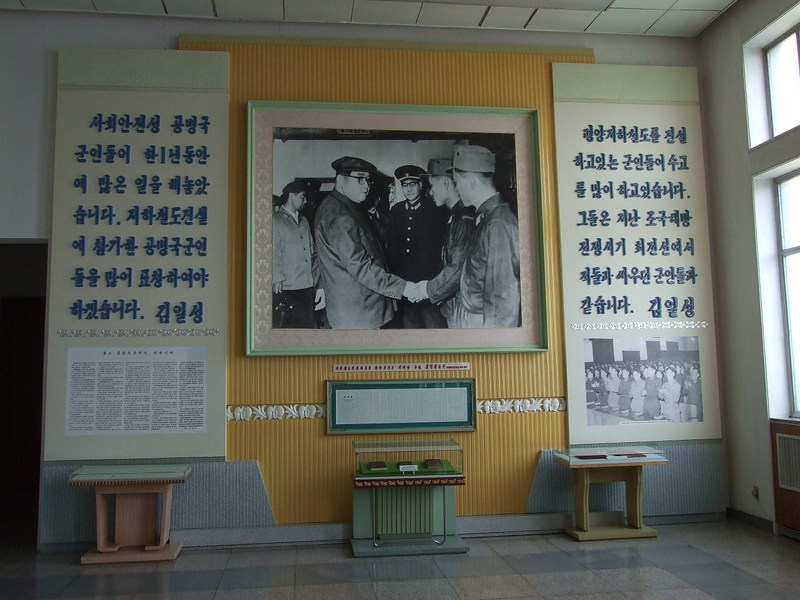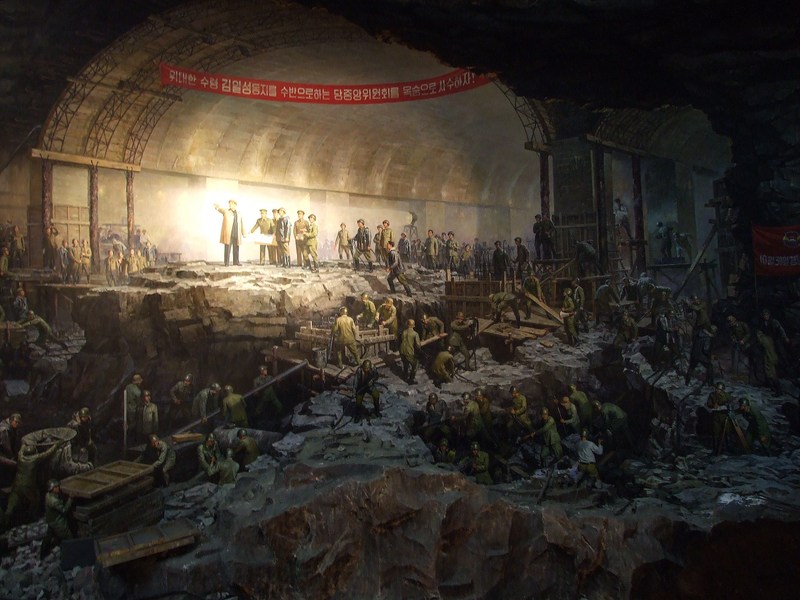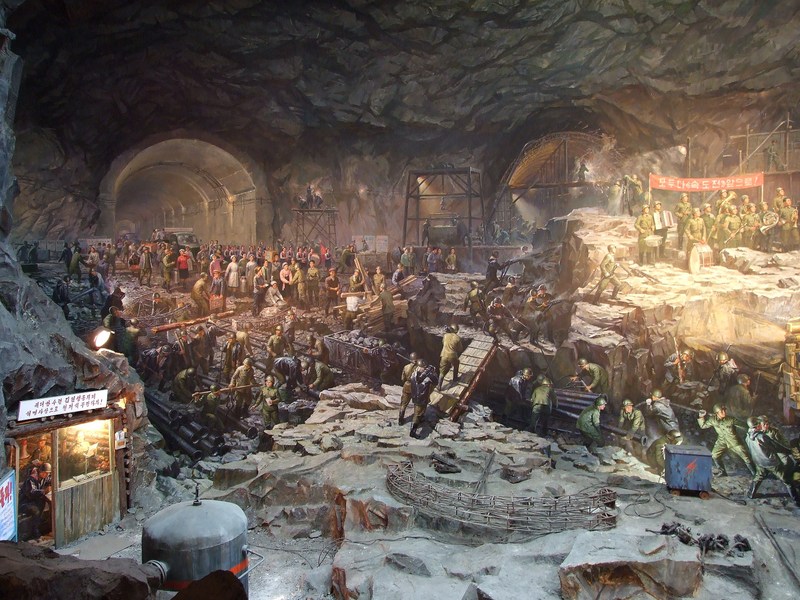The Demilitarized Zone
2008-09-23
Programm for today:
- drive to Panmunjom at the DMZ (Demilitarized Zone)
- lunch at Kaesong
- Koryo-museum at Keasong
- drive back to Pyongyang
- metro museum
- Kim Il Sung's birthplace at Mangyongdae (near Pyongyang)
- dinner at a restaurant in Pyongyang
View from our hotel room in the 21st floor:
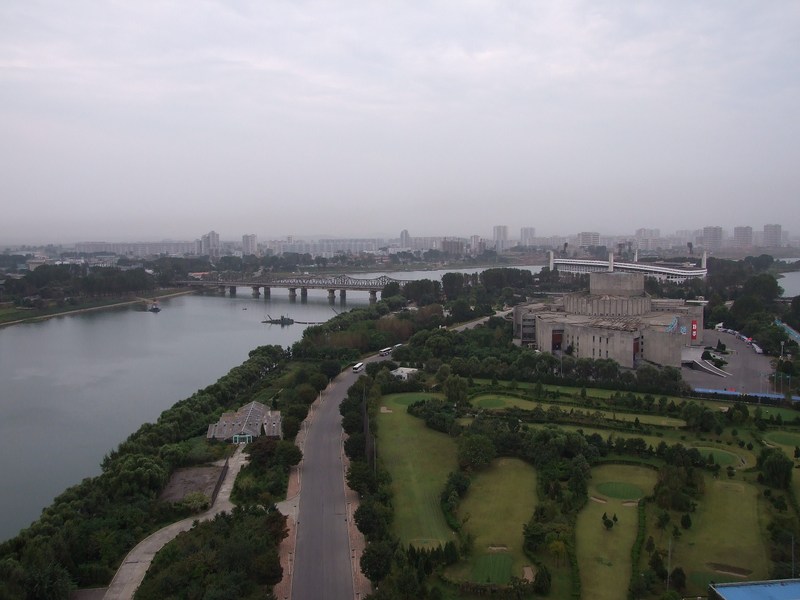
On the island you can see the cinema, where the 11th Pyongyang International Film Festival was taking place during our stay in Pyongyang. Yes, there is indeed an international film festival in Pyongyang:
http://en.wikipedia.org/wiki/Pyongyang_Film_Festival
http://articles.latimes.com/2008/oct/11/world/fg-film11
http://www.gluckman.com/NKFilmFest.html
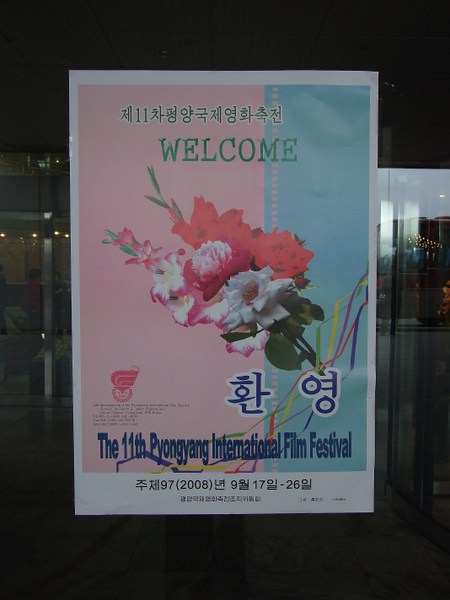
Due to that our hotel was quite busy at that time; at least I cannot say – unlike I read in other NK-travelogues – , that I had the impression, that the hotel was totally empty and only maybe 3 of 40 floors were open…
Especially in the morning there were lot's of people in the hotel lobby and also relatively long waiting times at the elevantors were not rare. And I had the impression, that also many North Koreans (high officials, of course) stayed at the hotel (alltough on other floors)… or were all of them guides for the foreigners? (our guides stayed at the hotel too during our trip).
Once while waiting for the guides in the lobby I also small-talked with two Germans, who were presenting a film at the festival.
We left for Panmunjom 30 minutes later than planned. The reason was, that our German speaking guide for the 1st two days got ill, and the "new" one who replaced him for the remaining two days had to accompany some tourists to the airport in the morning before meeting us.
During the waiting time Oliver and I did an "on-the-spot-guidance" at the car park in fron the hotel. Several KITC tour-busses were waiting for the tourist groups.
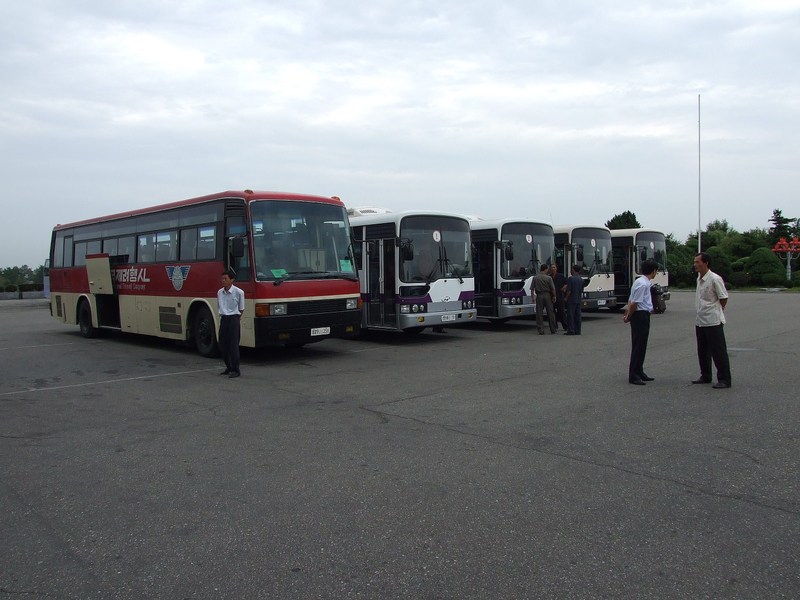
Also one "Kässbohrer Setra" bus was amongst the buses…
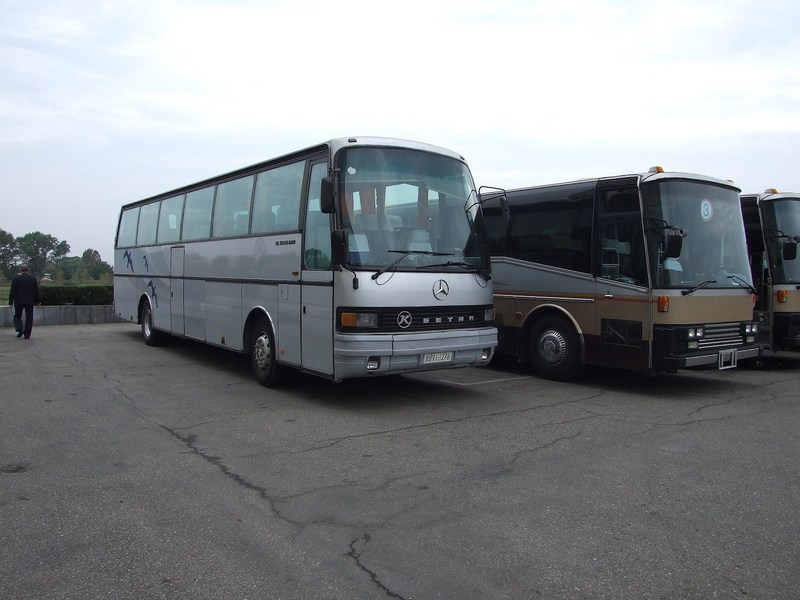
The drive to the DMZ took about 2 hours. The highway was similar to that to Myohangsan but with more tunnels, as the area was quite hilly.
It was noticeable that we got closer to the border, there were four checkpoints on the way there. But we only had to stop for a few seconds if at all.
Also concrete columns next to the road were signs of the near border. In an emergency case they would fall down on the road to block the way for tanks from the South...
I have no photos of them, but I found some here:
http://www.4sync.com/web/get/s.dolya/blog/NorthKorea22/20080923_nkorea_521.jpg
http://www.4sync.com/web/get/s.dolya/blog/NorthKorea21/20080923_nkorea_488.jpg
After the highway passes Kaesong it continues for a few more kilometers before it ends abruptly at the beginning of the DMZ. There is a even signpost saying "Seoul, 70 km"...
The DMZ divides North and South Korea. It is 248 km long and about 4 km wide. It is usually impossible to cross the DMZ, but in the previous years tourists coming from South Korea could visit some areas in the North and then crossed the DMZ by bus over newly built roads. Tours were possible to the Kumgang mountain and to Kaesong. See
http://en.wikipedia.org/wiki/Kumgang_mountain.
Currently these tours are suspended due to the worsened relationshuip between the North and the South.
Panmunjom was a village in the middle of the DMZ, where the ceasefire-agreement was signed in 1953. This place today is on the Norther side of the DMZ.
At the demarcation line there is the "Joint Security Area", where today negotiations between the North and the South are held. Tourists can visit the JSA from the North and from the South, but of course it is not possible to cross the border here.
More information:
http://en.wikipedia.org/wiki/Military_Demarcation_Line_(Korea)
http://en.wikipedia.org/wiki/Panmunjom
http://en.wikipedia.org/wiki/Joint_Security_Area
We had a short break at a car park at the entry to the DMZ. In one of the buildings we got a brief introduction into the place.
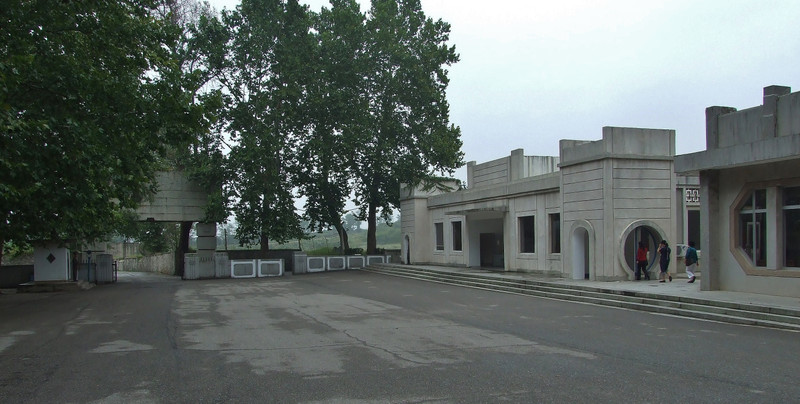
An overview map:
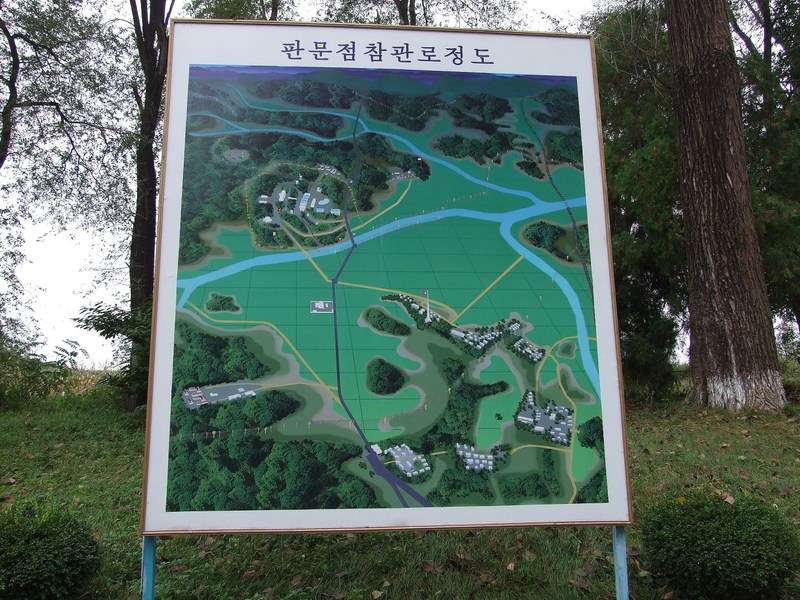
The place where we were is on the bottom, in the middle you see the Joint Security Area (JSA) and between the house, where the cease-fire agreement was signed.






